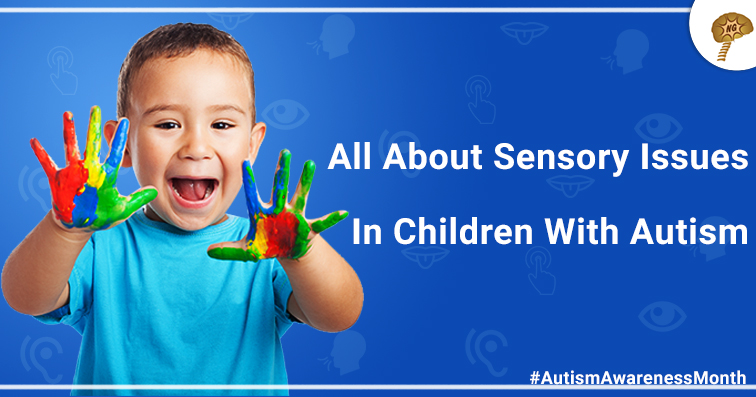
Sensory integration is a neurobiological process in which the sensory information from the environment is interpreted and integrated by the brain. In the brains of people with autism, this process may not always be carried out appropriately, leading to a number of problems.
Let us try to understand one of the major challenges faced by children with autism. The symptoms of autism include social and communication impairments, repetitive and restrictive behaviour and difficulty in processing sensory information. Individuals with autism often have difficulty regulating and responding to sensory inputs from the environment as well as the sensations from their own bodies.
The sensory systems can be broken down into six areas. These can be divided into two main areas hyper (high) and hypo (low) sensitivity. However, it is important to remember that the difficulties/differences may for some individuals fall into both areas. Proprioceptive system tells us Situated in the muscles and joints, this tells us where our bodies are. It also informs us where our body parts are and how they are moving. Visual system Situated in the retina of the eye and activated by light, our sight helps us to define objects, people, colours, contrast and spatial boundaries. Smell olfactory tells us by chemical receptors in the nose, process smells in our immediate environment. However, Smell is a sense taken for granted and is often neglected or forgotten about. It is, however, the first sense we rely upon hearing situated in the inner ear, this informs us about sounds in the environment. It is the most commonly recognised aspect of sensory impairment.touch tells us Situated on the skin, the body’s largest organ, this relates to touch, type of pressure and level of pain and helps us distinguish temperature (hot and cold).vestibular system tells us Situated in the inner ear, this provides us with information on where our body is in space and its speed, direction and movement, all in relation to the pull of gravity. It is fundamental in helping us to keep our balance and posture.taste tells us Processed through chemical receptors in the tongue, this tells us about different tastes – sweet, sour, bitter, salty and spicy. Individuals will often have restricted diets as a result of their taste buds being extra sensitive.
These problems can manifest in a number of ways. A child with autism may:
- Be over-responsive or under-responsive to any sensory input.
- Have either an activity level that is too high or too low.
- Be in motion constantly or tire easily.
- Have fine motor coordination issues.
- Have difficulty adjusting to new situations.
This information is important for to know so that we can increase our level of understanding and awareness about autism.








